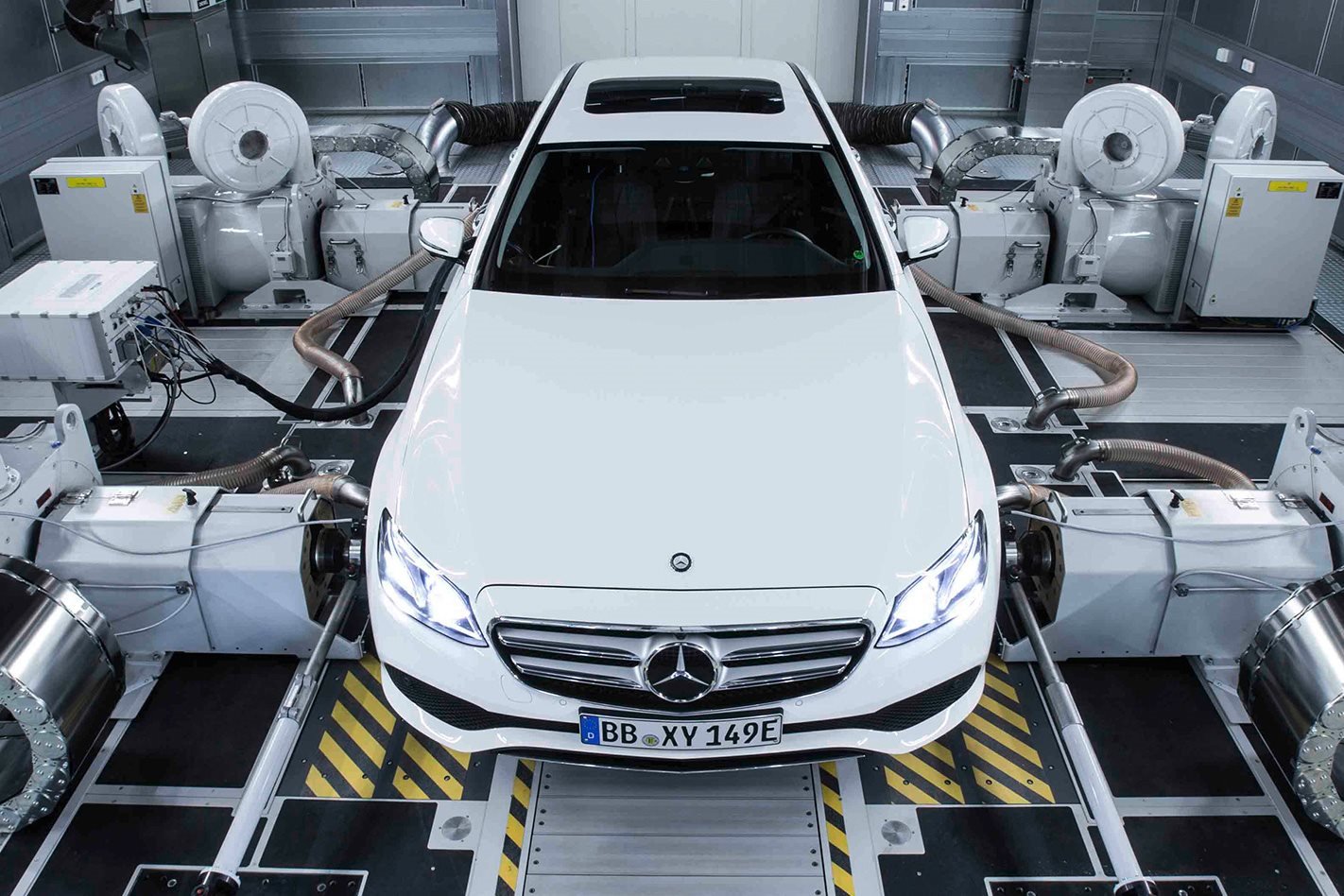Mercedes-Benz has launched its new generation of modular engines, featuring a return to in-line six-cylinders and the most economical twin-turbo V8 it has ever built.
It also features the roll-out of the German luxury carmaker’s first 48-volt cars, starting with a facelifted Mercedes-Benz S-Class limousine that will roll out the technology globally next year.
“The new engine family from Mercedes-Benz sets new standards in terms of power output, refinement and efficiency,” the carmaker said.
“The new family of petrol and diesel engines, with four, six and eight cylinders, is of modular design. The key features of the new family are a standard cylinder spacing of 90 mm and identical interfaces to the vehicle, which makes for modern, flexible production, among other things.
“The scaling of state-of-the-art technologies and electrification options from 12V to 48V to high-voltage plug-in applications makes it possible to configure the appropriate powertrain for every vehicle,” it said.
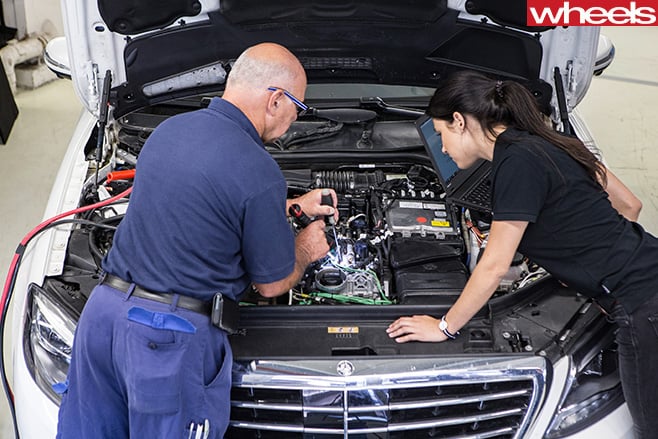
“We went into a ‘V’ architecture to bundle V8 volume and V6 volume, at the time the V8 share was much higher. Knowing that downsizing is the trend, we’ve decided to go back to the previous solution making 4-cylinder and 6-cylinder and diesel and [petrol] as close as possible. Same bore size, same combustion concept, because that puts a really flexible production system in place.”
Similar to the 48-volt Audi Q7 large SUV that has pioneered the technology, the S-Class will run a combination of a 12-volt system that will power traditional parts of the car such as lights and the radio. The more powerful battery will be reserved for the engine’s stop-start system and a host of other high-demand systems such as the power steering, water pump and air-conditioning compressor, and even active suspension systems.
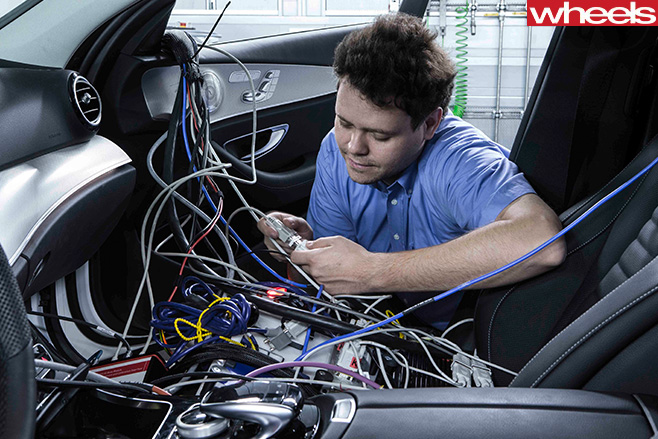
Its new petrol equivalent, the M264 turbocharged 2.0-litre four-cylinder engine, is optimised for the 48V system, producing “about” 100kW per litre. Its belt driven starter-alternator can step in and provide extra boost to the engine below 2500rpm.
Similar to what Lexus has done with its four-cylinder engine, Mercedes has routed the exhaust to improve the twin-scroll turbocharger’s boost at low revs. The turbo also uses an electric wastegate to allow fast changes in charge-air pressure.
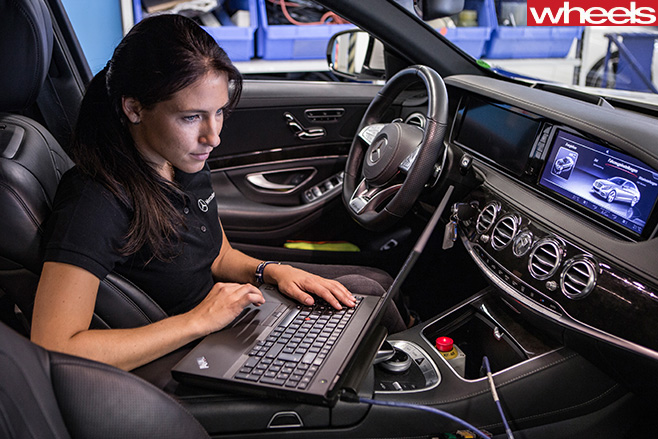
It’s also shorter than a conventional in-line six: the starter-alternator’s packaging means there is no belt drive at the front of the engine, reducing its length. The engine’s cylinders are also spaced much closer than in the V6 it replaces, falling from 106mm to just 90mm.
Acting as a motor, the starter-alternator will also add up to 15kW and 220Nm of low-speed performance to the engine, reducing turbo lag.
Rounding out the six-cylinder engines is a 2927cc diesel unit producing more than 230kW and 650Nm. Similar to the four-cylinder diesel that made its debut in the E-Class, the OM656 six-pot places the particulate filter as close to the engine as possible to improve the efficiency of the system.
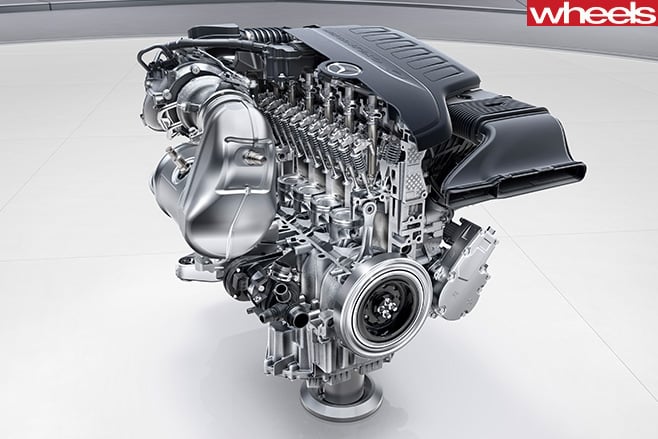
“Looking into the upcoming challenging emissions regulations we believe and we know downsizing will come to its limits. With our line-up we are well-prepared,” said Weber.
Unlike some manufacturers, Mercedes-Benz is sticking with the bent eight, announcing a new 3982cc M176 V8 that produces 350kW and about 700Nm from about 2000rpm. It features twin turbochargers mounted inside the engine’s bank – something the technicians refer to as a “hot inside V” configuration.
From 900-3250rpm the engine can shut down half its cylinders – numbers two and three, and five and eight – to run like a four-cylinder unit. Official fuel use should fall to around 8.3L/100km.
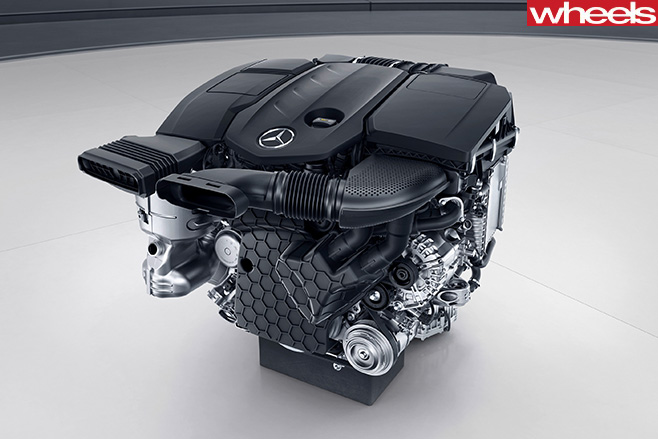
Carmakers are moving to 48V systems as a way to shave weight from cars, which use up to four kilometres of wiring. The higher voltage means that wires only need to carry a quarter of the current of a conventional 12V system, meaning they can be thinner and lighter.
This is important as cars, and the growing number of driver assist technologies built into them, become more complex.
Mercedes has previously announced that all its new-generation petrol engines will add a particulate filter to the exhaust system to reduce emissions.

